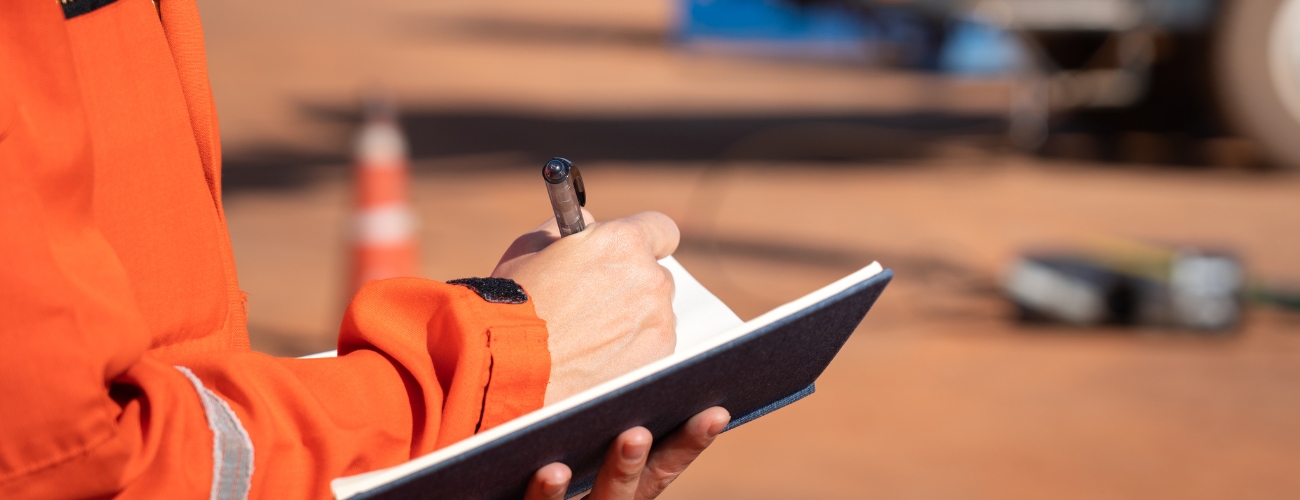May 20, 2025
Sara Davies
Articles
Not sure where to start with building a greener fleet? Emission reduction is becoming an urgent imperative and for many businesses has no greater relevance than within their business fleet. Managers can make considerable impact by changing the way they supply and run their vehicles. Our article outlines changes that can be made to reduce carbon emissions by building and maintaining a fleet of EVs and hybrids - and designing the infrastructure to support them.
Why is an environmentally friendly fleet important?
There are a multitude of reasons for making your fleet more environmentally friendly:
- Decrease emissions including lowering pollution, noise and light emissions
- Lower expenses such as fines and charges from driving in low emission zones, plus road and company car taxes
- Increase efficiency including fuel efficiency by utilising hybrid and electric models
- Improve CSR by introducing and promoting greener company fleet strategies and practices
How can you make your fleet more environmentally friendly?
Introducing electric and hybrid vehicles will be one of the most important steps you can take to make your fleet greener. As you’ll be aware, it’s not simply a case of swapping ICE vehicles for electric or hybrid and off you go…You’ll need to consider the various different types on the market, which drivers each is best suited to and how they’ll conveniently access chargers. The challenges and solutions sections outlined below cover the key considerations.
What are the challenges in creating greener fleets?

1. Teething problems
Some businesses fear that unforeseen issues while transitioning across to electric vehicles will pose serious risk to the day-to-day functioning of the business.
2. Range concerns
Fleet managers are often concerned when and how vehicles will be charged and worry that employees will be left stranded or using valuable time they should be out on the road or working to charge vehicles.
3. EV maintenance
Questions fleet managers commonly raise include whether or not EV maintenance will be more costly than maintaining a fleet of traditional ICE vehicles and how the maintenance schedule will be affected.
4. Employee resistance
You might find some of your workforce have negative assumptions you’ll need to help them overcome about electric vehicles that may not be true or may only be true for a select few makes and models.
5. Driver habits
Braking hard is one of several driver habits that won’t do the car’s range any favours. Braking slowly in order to recapture energy will make a significant difference to range and charging frequency.
So…what are the solutions?
1. Create a fleet audit and strategy
Thorough planning of your transition to an electric and/or hybrid fleet will be crucial to minimising teething problems and achieving the required outcome, while ensuring the changes you implement serve the business well and fulfil all of its objectives.
You’ll need to:
- Define your goals, establishing clear objectives such as lowering operating costs and meeting sustainability targets.
- Analyse lifetime costs, not just the intial outlay, when assessing the financial implications of swapping across.
- Audit your current fleet to identify the right vehicles to change to electric or hybrid, for the right types of driver and journeys.
- Create an implementation timeline and define the associated budget for vehicles, chargers and associated equipment.
- Develop a communication plan for drivers and stakeholders, across the transition period and onwards.
- Monitor effectiveness of the strategy and whether it’s achieving business and financial goals, adjusting as needed.
- Develop a charging infrastructure plan, pinpointing the most convenient, time efficient public chargers and work charging capabilities (more on below).
2. Identify a charging infrastructure
An EV fleet requires an adequate charging infrastructure, including public and workplace chargers, where possible supported by home charging for members of staff who have these capabilties. It’s vital to consider factors such as the location of charging stations, the number of stations required, and the types of charger needed. When electric vehicles were first introduced, their ranges between charges weren’t particularly practical but since then, they’ve come a long way. Battery sizes and capabilities have increased, meaning that many models now achieve over 300 miles on a single charge, with a few achieving ranges well into the 400s.
With a new charger added to the public network every 29 minutes, over 75,000 public chargers are now available across the UK and the government is investing more than £2.3 billion to help industry and drivers make the switch to EVs. The latest public chargers offer faster speeds of charging and the cost remains cheaper than filling up with a tank of traditional fuel. Fleet managers dealing with lots of vehicles on unpredictable routes at any given time will need to consider which charging stations are in the best locations and provide fast enough chargers for their drivers.
Installing chargers at your workplace will ease these concerns to some extent, especially if the vehicles in your fleet are long range vehicles which may be able to be driven for a period of days before they need recharging. If you have private parking at your business premises it should be straightforward to add the necessary infrastructure for electric charging points. Drivers can then charge their vehicles while in the office, reducing the costs associated with public charging and the inconvenience and loss of business time associated with making regular stops. The Workplace Charging Scheme provides support for organisations towards the cost of installing up to 40 electric vehicle chargepoint sockets at their sites.
Don’t forget the role of hybrids for areas of the business and roles where you feel a full EV wouldn’t be in the business’ best interest. Only PHEVs (plugin hybrids) need plugging in to charge, while the battery in an HEV (full hybrid) of MHEV (mild hybrid) is charged while the vehicle is being driven. For more information read our guide.
3. Understand EV maintenance

Once you’ve learned the differences between ICE and EV maintenance, you might find some unexpected benefits. Electric vehicles have fewer moving parts which means fewer components to go wrong or be subject to wear to tear, whereas a combustion engine has many parts that can need replacing or repairing over a vehicle’s lifetime. On the flipside, if something does go wrong with an EV it can be more costly to put right than a petrol or diesel car since fewer mechanics are trained on electric cars, increasing the labour costs.
As with ICE vehicles, regular inspections will help you spot any problems early on in order to avoid more costly repairs. We’ve written about this and other downtime reduction strategies if you want to learn more. Another way businesses can avoid large unexpected costs is to outsource maintenance support to a fleet management firm like Wessex Fleet. Pay monthly for maintenance costs on your fleet vehicles and if there is a larger issue we can work with our network of contacts to reduce the cost to you.
4. Get buy-in from employees
Providing employees with all the information on the advances that have been made in range and charging will help you get them on side when it comes to electrifying your fleet. Depending on your business, you might use methods including consultation and meetings or internal email communications and campaigns to highlight all of the benefits EVs bring, not only to the business but to the day-to-day driving experience and even their bank balance. Electric vehicles have much lower BIK rates which means additional tax savings and great potential for salary sacrifice schemes to save employees money too.
5. Driver training
Training is an essential part of helping your drivers to understand electric vehicles, how they work and how to drive them the most efficiently. There are some differences between driving an electric vehicle and one with an ICE. All electric vehicles are automatic as they don’t have the manual gear transmission that comes with a petrol or a diesel. If a driver hasn’t driven an automatic vehicle before then they may need additional support to get them comfortable with driving one.
Certain habits such as braking slowly in order to recapture energy that’s usually lost, through the regenerative braking technology, will make a significant difference to mileage range and charging frequency. Training will help your drivers learn new habits and how to use them. You’ll need to invest time and funds into driver education, training and support in order to overcome the bad driving habits of your employees and encourage them to embrace the incorporation of EVs and hybrids in your business fleet.
Enjoyed this article? Read more of our latest blogs below:
- Our Charity Walk for Terminally Ill Children
- 5 Standout Hybrids in 2025
- Top 5 EVs for 2025
- ZEV Mandate Changes in April 2025
For all our latest news and blogs click HERE.
Or are you looking to understand the company car, fleet management or any other aspect of fleet vehicles? If so, then check out our Guide Pages.
